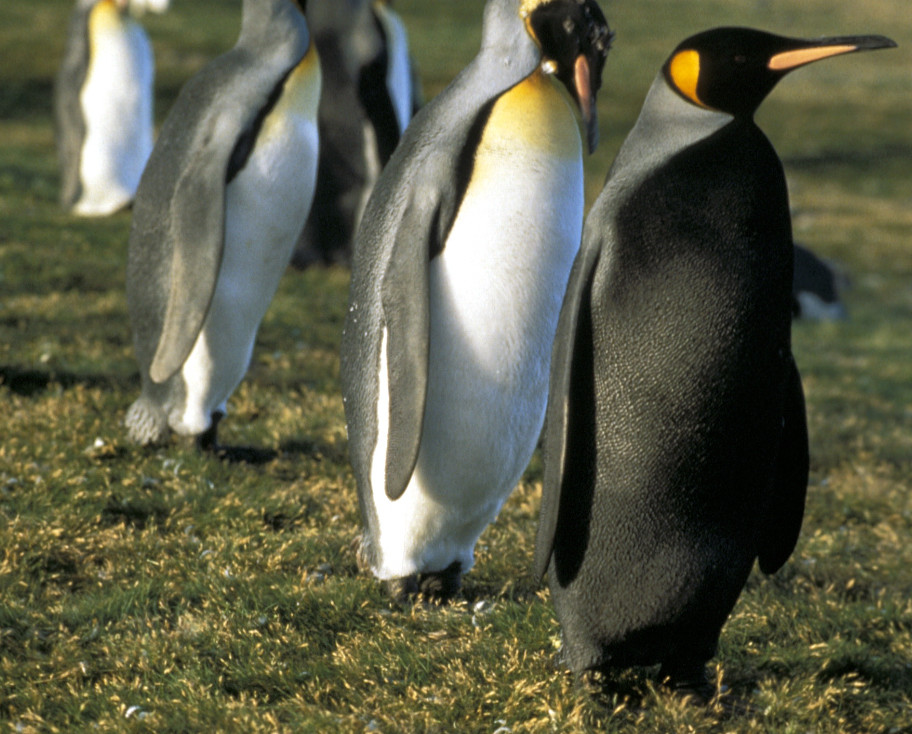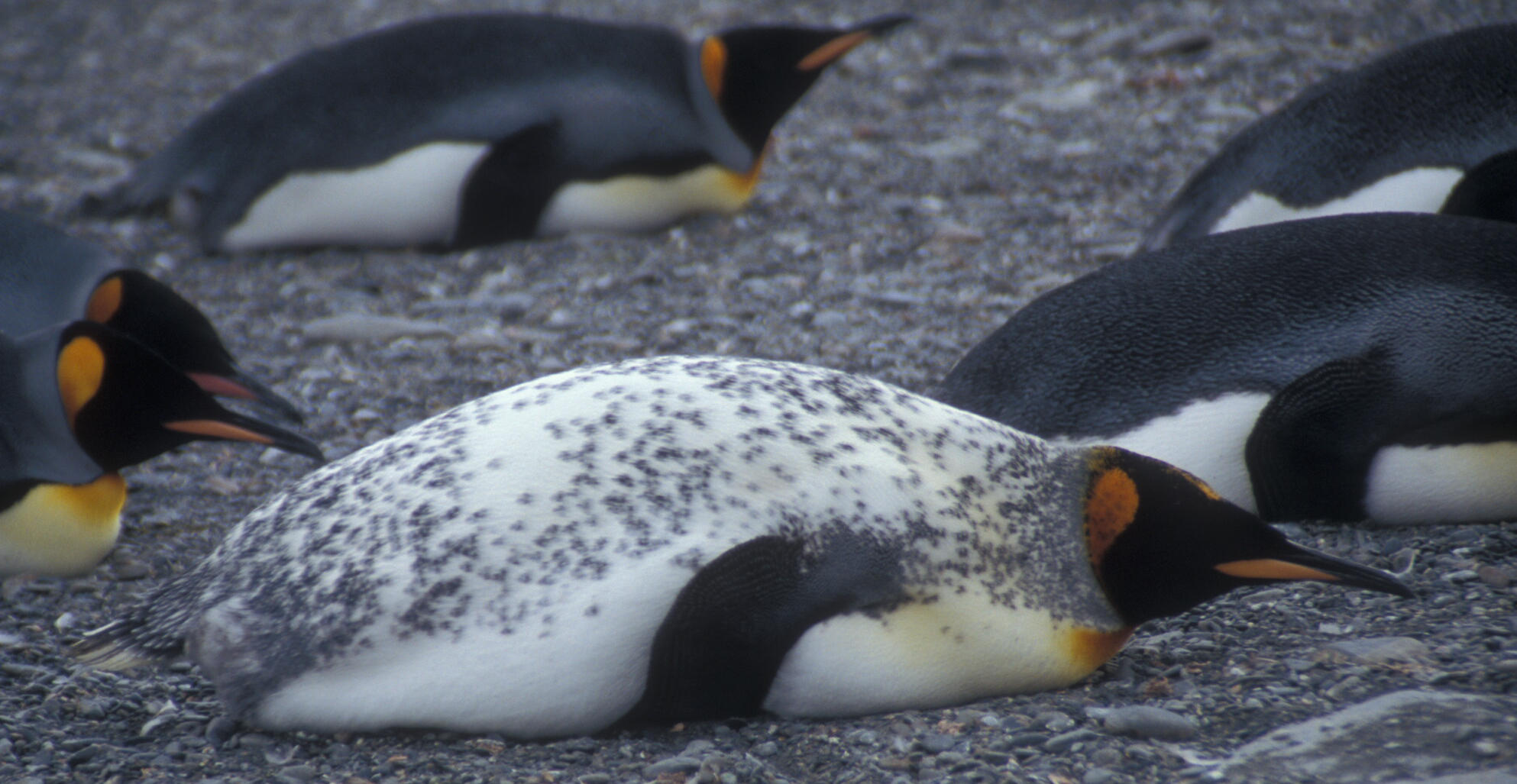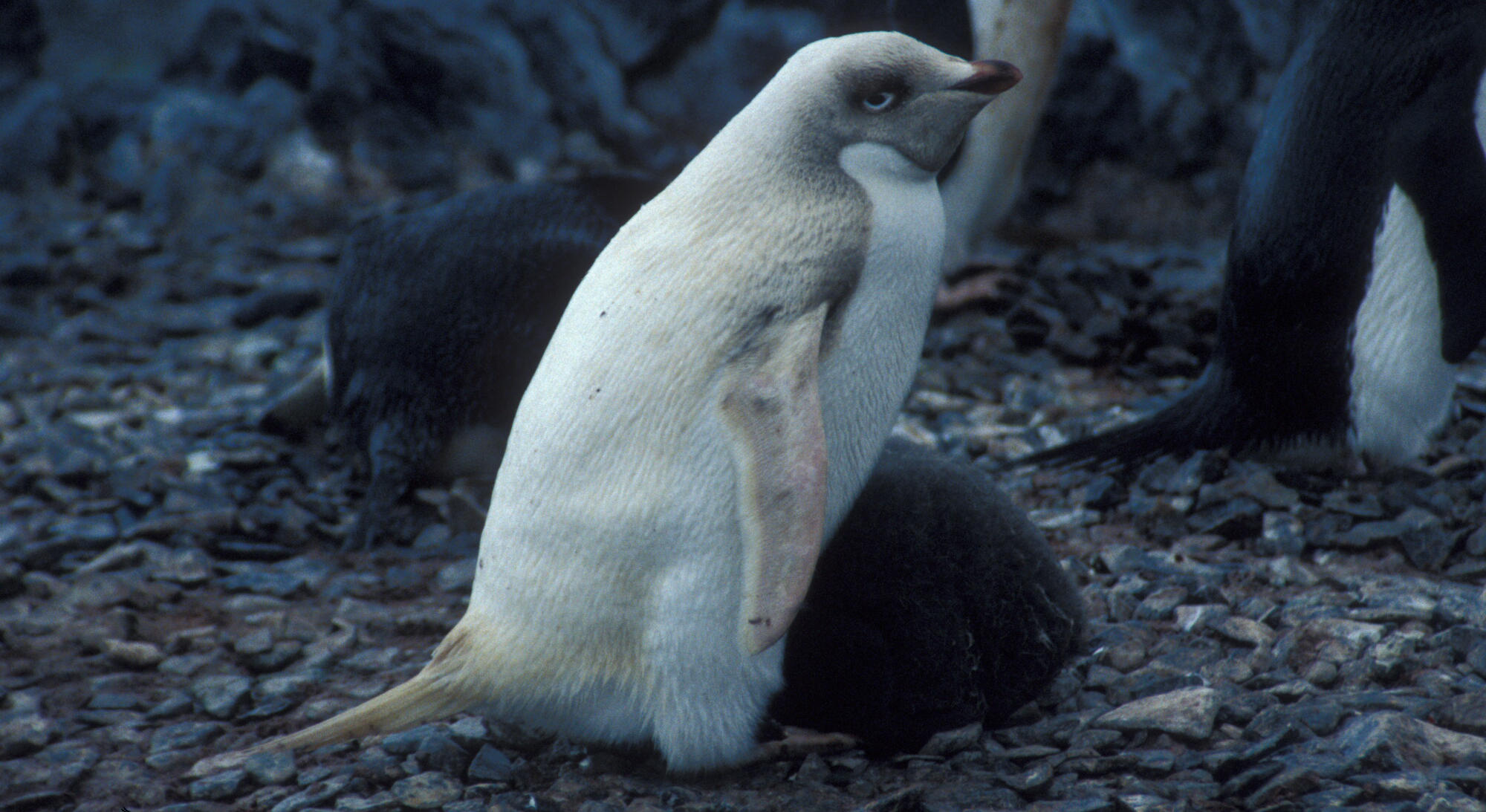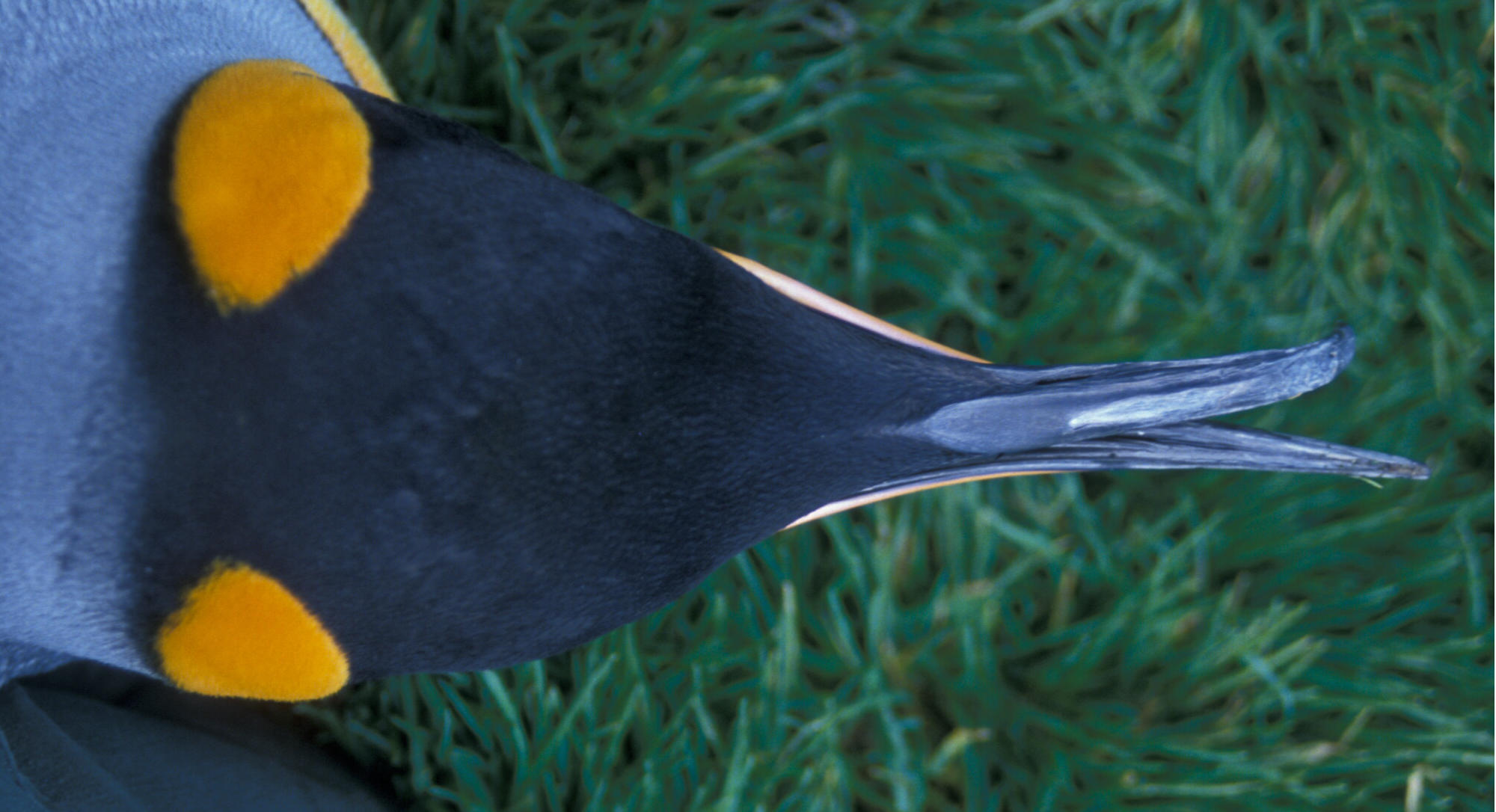
PinguinWissen.de – English
Aberrations
Organisms are not perfect - especially not penguins on land. They seem very strange while walking, sometimes a little bit silly. But because of their dress coat they look very elegant. However, there are some individuals observed that do not adhere to this dress code. There are special aberrations in penguins which can affect the feather staining but also the form of beak and feet. What are the reasons of these aberrations?
Abnormal feather staining
The staining of feathers and skin is defined by pigments. One of the most important skin pigment is melanin. Due to solar irradiation the cells of the human skin produce more and more melanin so that the skin is protected against UV radiation. That is why our skin becomes brownish in summer.
There are two main types of melanin: eumelanin and pheomelanin. Eumelanin appears dark like black, grey and dark brown, while pheomelanin causes a red-brownish staining. The feather staining of the penguins are defined by different concentrations of the pigments in the cells which are responsible for the staining. For example, the concentration of eumelanin is very high in the black feathers in the back of a penguin. In contrast, the white feathers contain a very low concentration or no eumelanin.
The yellow, orange or red stained feathers of a penguin are defined by other pigments, the so called carotenoids. These pigments are taken in with food, shellfishes like krill contain a very high concentration of carotenoids. However, researchers find out that the head feathers in Macaroni Penguins and ear and breast spots in King Penguins contain no carotenoids. Instead there should be still unknown pigments (McGraw et al. 2004). Very interesting is the fact that in the Gentoo Penguin the intensity of the orange staining of the beak can be changed by food, but the staining of the feet is not influenced by food (Jouventin et al. 2007).

Melanistic King Penguin
Photo by Pat Lurcock
Melanism
This aberration is caused by a genetic mutation and results in a higher concentration of one type of melanin. For example, if there is a higher concentration of eumelanin, the feathers of a penguin will be stained black. If there is a higher concentration of pheomelanin, the feathers will turn into a red-brownish staining. Simultaneous increases of both main melanins are not oberved yet. So, in a case of melanism both main types of melanin are still there but one type exist in a higher concentration while the concentration of the other pigments is normal.
Albinism
Albinism is caused by a recessive genetic mutation. Recessive means that albinism does not occur in every generation. If there is a albinotic father and a normal coloured mother, the child is not affected by albinism if the mother has no albinotic blood relatives.
The enzyme tyrosinase is not produced because of the damaged gene. This enzyme is responsible for the production of melanin. Without melanin skin and feathers of an albino stay colourless, we perceive it as white. Nevertheless, there could occur colours like yellow, orange and red because the tyrosinase has no influence on carotenoids. Also the eyes of an albino are colourless. But they seem to be red because the blood vessels of the eyes are shining through.
In the nature there are observed quite less albinotic penguins and other birds. There are some albinotic chicks though, but albinotic adults are seen very rarely. Albinos are hindered by a debility of sight, they are more light sensitive and have problems with depth recognition. That is why they fall prey to their predators more often.
Leucism

Leucistic King Penguin
Photo by Klemens Pütz
This genetic damage results in a colourless feathering, too. In this case the tyrosinase is still active and melanin can be produced. The problem is that the melanin producing cells cannot transport the melanin into the feathers, that is why the feathers seem to be white. In some cells the transport of melanin is still possible so that there is a black-white brindled pattern. It is also possible that there are red, yellow and orange stains because of carotenoids. The difference between leucism and albinism is the eye colour: leucistic animals have dark eyes. Leucistic adults occur more often than albinotic ones because their sight is normal and they have a better orientation. So they can avoid their predators more effectively. Generally, the phenomenon of leucism appears very rarely.

Adelie Penguin with washed out feathering
Photo by Klemens Pütz
Moreover, there are types of leucism, in which the total concentration of melanin is reduced. That is why the staining of the feathers seems to be washed out. The contour of the feathering is still visible but the intensity is so much reduced that actual black staining becomes grey. This stains are differentiate between pastel colour and isabelline. In the pastel colour variant the concentration of both types of melanin is reduced, in the isabelline variant only the concentration of eumelanin is reduced.
Generally, it is quite difficult to classify the different stain aberrations. The definitions differ from author to author and there are so many different types. In some birds even single feathers could be stained differently. The defect lays often on different genes, only in albinism the same gene is affected.
Physical deformities
Next to abnormal feather staining there are observed physical deformities in penguins. For example, Voisin et al. (2002) report on a chick with three legs. Unfortunately, this chick was found dead, the reason was not clear. Another chick had a deformed backbone (scoliosis), from the back it was looking like a "S".
Also the beak can be deformed, here the top and bottom beak do not fit together, they are displaced against each other. The following photos are provided by the German penguin researcher Dr. Klemens Pütz and show penguins with beak deformations:



References
van Grouw, H. (2006). Not every white bird is an albino: sense and nonsense about colour aberrations in birds. Dutch Birding, 28(2), 79-89.
McGraw, K. J. et al. (2004). You can't judge a pigment by its color: carotenoid and melanin content of yellow and brown feathers in swallows, bluebirds, penguins, and domestic chickens. The Condor, 106(2), 390-395.
Voisin, J. F. et al. (2002). Colour aberrations and physical deformities in the King Penguin Aptenodytes patagonicus at the Crozet Islands. Marine Ornithology, 30(1), 1-4.
Jouventin, P., McGraw, K. J., Morel, M., & Célerier, A. (2007). Dietary carotenoid supplementation affects orange beak but not foot coloration in gentoo penguins Pygoscelis papua. Waterbirds, 30(4), 573-578.
↑ back to top ↑
PinguinWissen.de
Further information
Last update: 19.01.2021
Currently under construction: Design and texts.
 GER
GER